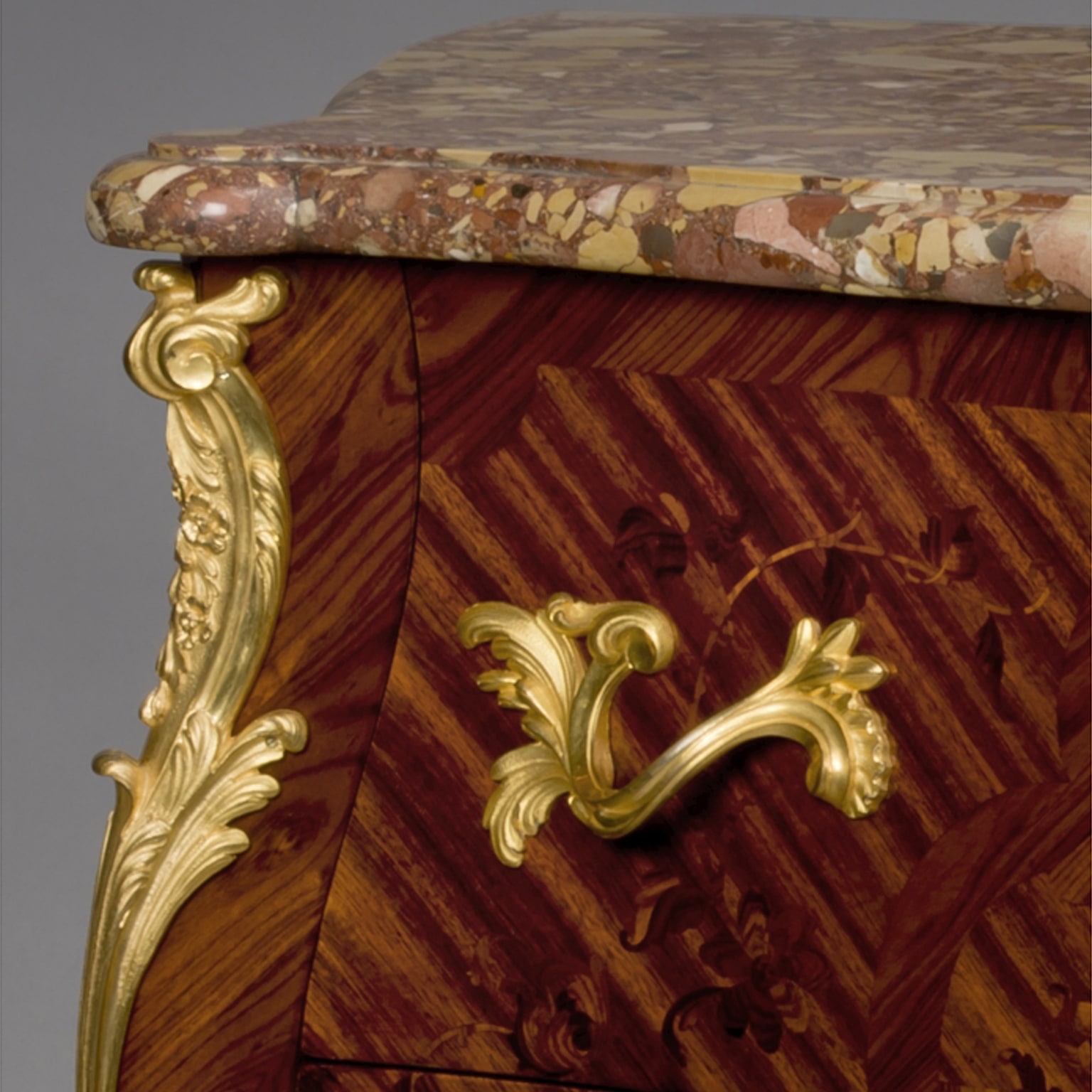Veuve Sormani & Fils
A Fine Louis XV Style Marquetry Inlaid Commode
£28,000
A Fine Louis XV Style Marquetry Inlaid Commode With a Breche d'Alep Marble Top by Sormani. Stamped 'SORMANI Paris' twice to the carcass, signed 'Sormani...
Dimensions
Height: 90 cm (36 in)Width: 110 cm (44 in)
Depth: 50 cm (20 in)
Description
A Fine Louis XV Style Marquetry Inlaid Commode With a Breche d’Alep Marble Top by Sormani.
Stamped ‘SORMANI Paris’ twice to the carcass, signed ‘Sormani 134 boulevard Haussmann à Paris’ to the lock plate.
This fine commode has a shaped breche d’Alep marble top above a body of bombe shape with two drawers, finely inlaid with foliate marquetry sans traverse, above a shaped apron centred by an acanthus mount. The drawers sport finely cast gilt-bronze foliate handles and superb acanthus cast mounts to the angles, the commode is raised on tapering legs with scrolled caps.
Date
Circa 1880
Origin
France
Medium
Marquetry and Gilt-Bronze
Signature
Stamped 'SORMANI Paris' twice to the carcass, signed 'Sormani 134 boulevard Haussmann à Paris' to the lock plate.












 Print
Print


